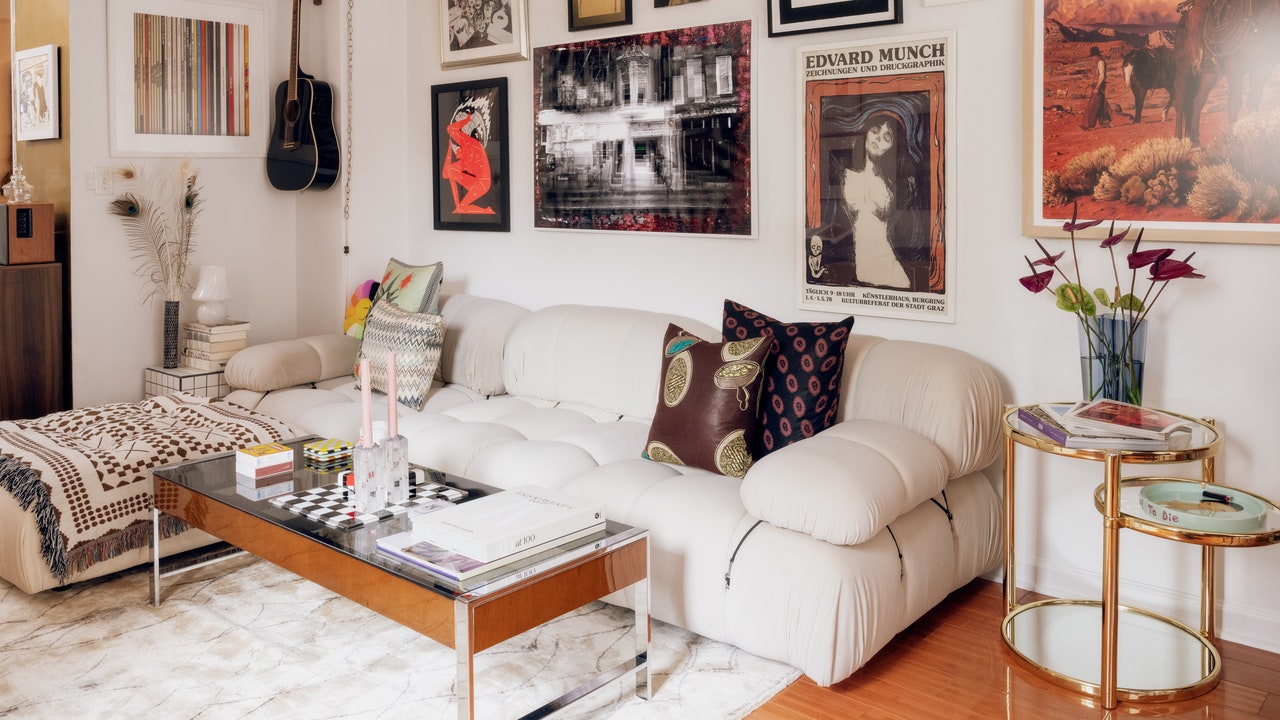
To the undiscerning eye, the couch, at first glance, looked more like a bean bag than an actual sofa. Its surface is creased like a Shar Pei dog, wrinkled but still invitingly plush (made out of foam, I later learned). For a few weeks last year, I kept encountering its hulking silhouette across the various interior design Instagram accounts I followed. There were iterations of the couch in moss green, ecru white, blue velvet, and tan leather upholstery, both as a singular loveseat and as a modular set. I was led to believe, under the influence of my social media feeds, that the bean bag was a living room staple. Everyone appeared to own one. It wasn’t until I entered the home of a young artist friend that I learned of its name—the Togo sofa, designed by Michael Ducaroy for Ligne Roset in 1973. His loveseat, purchased new, cost $4,320, but a friend of his had just purchased a knockoff for a fraction of the price on Amazon. “It kind of feels the same when I sit on it,” he admitted, “except I can actually sell mine if I get tired of it.”
Before the Togo, there was the Murano mushroom lamp, the Ultrafragola squiggly neon-lit mirror, the blob-like Bellini sofas, and the Cesca dining chairs—eye-catching home objects and accessories that have become trendy, for better or for worse, among consumers in their early-to-mid 20s, a large fragment of Gen Z. This population of furniture buyers, unlike some of their elders, is unique in cultivating their interior aesthetics quite early on, thanks to platforms like Pinterest, Instagram, and TikTok. Gen Z celebrities, too, like Emma Chamberlain, Chlöe Bailey, and Iris Apatow, are eager to exhibit their meticulously-designed homes on social media display.
Rather than seek out the guidance of print magazines or established designers, an approach that may be more often afforded to people with disposable income, Gen Z’s decorating style is colored by a do-it-yourself ethos, characterized by bold colors, playful patterns (like checkerboard or wiggles), and other aesthetic flairs that can be easily summed up in a word or phrase, like avant basic, Space Age, Art Deco, or beach house boho.
There is, however, a curious homogeneity to these aesthetic experiments, as young buyers’ tastes are influenced by and reflected through the lens of social media. For example, midcentury modern becomes a design aesthetic to emulate (or repudiate) instead of a specific era to source furniture from. Young people today could suffer from inspiration overload—an excess of interior design inspiration, one would assume, as a result of the internet—but the opposite, in fact, may be true.
“On Instagram, you encounter so many different visual moodboard accounts, but they’re often sharing the same apartments, the same spaces,” explains Lalé Boz, an interior designer and founder of Normal NYC, adding that certain images or aesthetics seem to be favored by the Instagram algorithm. “There actually might be repeated overexposure to the same spaces or images, recycled by different accounts. Because the images look similar, it creates the impression that something is an interior trend.”
